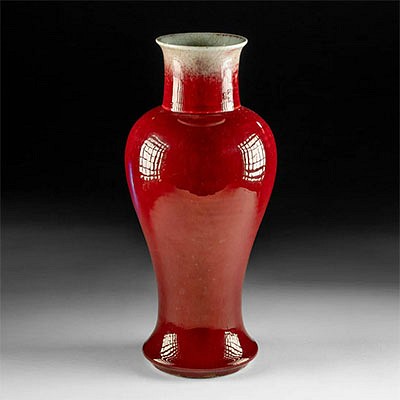Sican-Lambayeque Lord Spondylus Inlays, ex-Schmitt
Lot 261
About Seller
Artemis Fine Arts
686 S Taylor Ave, Ste 106
Louisville, CO 80027
United States
Selling antiquities, ancient and ethnographic art online since 1993, Artemis Gallery specializes in Classical Antiquities (Egyptian, Greek, Roman, Near Eastern), Asian, Pre-Columbian, African / Tribal / Oceanographic art. Our extensive inventory includes pottery, stone, metal, wood, glass and textil...Read more
Estimate:
$1,800 - $2,700
Absentee vs Live bid
Two ways to bid:
- Leave a max absentee bid and the platform will bid on your behalf up to your maximum bid during the live auction.
- Bid live during the auction and your bids will be submitted real-time to the auctioneer.
Bid Increments
| Price | Bid Increment |
|---|---|
| $0 | $25 |
| $300 | $50 |
| $1,000 | $100 |
| $2,000 | $250 |
| $5,000 | $500 |
| $10,000 | $1,000 |
| $20,000 | $2,500 |
| $50,000 | $5,000 |
| $100,000 | $10,000 |
| $200,000 | $20,000 |
About Auction
By Artemis Fine Arts
May 11, 2023
Set Reminder
2023-05-11 10:00:00
2023-05-11 10:00:00
America/New_York
Bidsquare
Bidsquare : Fine Antiquities, Asian, Pre-Columbian, Ethnographic Art
https://www.bidsquare.com/auctions/artemis-gallery/fine-antiquities-asian-pre-columbian-ethnographic-art-12771
Classical antiquities, ancient and ethnographic art from cultures encompassing the globe. Artemis Fine Arts info@artemisfinearts.com
Classical antiquities, ancient and ethnographic art from cultures encompassing the globe. Artemis Fine Arts info@artemisfinearts.com
- Lot Description
**Originally Listed At $1500**
Pre-Columbian, North Coast Peru, Sican / Lambayeque culture, ca. 10th to 11th century CE. A well-preserved wood dignitary or lord wearing a tumi or crescent-shaped headdress, inlaid with spondylus, nacre shells, and turquoise! These wooden figures are a rare glimpse into some of the lesser-known burial goods which were deposited with the deceased, perhaps to serve as guardians. The citrine shards of Spondylus served as sacred offerings to Pachamama, the earth/time mother, a version of Mother Nature, and this shell held numerous symbolic meanings including fertility and elite social status. At nearly a thousand years old, this wooden figure is truly remarkable, the dry climate of the Peruvian coastal regions enabled the preservation of wood and other organic materials that we rarely see in other Pre-Columbian cultures! Size of figure: 5" L x 2.5" W (12.7 cm x 6.4 cm); case: 8.25" L x 6.25" W (21 cm x 15.9 cm)
A similar example lent from the Museo Larco collection of Lima, Peru was featured in the "Gold and the Incas Lost Worlds of Peru" exhibition at the National Gallery of Australia (2013). According to the curators, "Debate continues about the purpose these figures served in burial rituals and the afterlife. Although they were originally thought to have been worshipped as idols, more recent research suggests that they performed a more narrative function and were positioned in graves to act out sacred rituals. This is supported by the variations in gender and physical positions."
The Sican, which succeeded the Moche culture, is also known as the Lambayeque culture, named for the region in Peru. Interestingly, some archeologists and anthropologists still dispute whether the two were distinct cultures. Most of what we know about Sican comes from a large area called the Batan Grande Archaeological Complex, a huge ceremonial and cemetery site for a little-understood ancient civilization. With pyramids rising over 40 meters high and thousands of tombs, the area represents a lengthy period of occupation.
PLEASE NOTE: Due to recent increases of shipments being seized by Australian & German customs (even for items with pre-UNESCO provenance), we will no longer ship most antiquities and ancient Chinese art to Australia & Germany. For categories of items that are acceptable to ship to Australia or Germany, please contact us directly or work with your local customs brokerage firm.
Provenance: ex-Marc Amiguet Schmitt estate, Amiguet's Ancient Art, Evansville, Indiana, USA, acquired prior to January 1, 2010
All items legal to buy/sell under U.S. Statute covering cultural patrimony Code 2600, CHAPTER 14, and are guaranteed to be as described or your money back.
A Certificate of Authenticity will accompany all winning bids.
We ship worldwide and handle all shipping in-house for your convenience.
#174811Leg reattached. Striations and fissures throughout. Cavities, abrasion, and surface weathering commensurate with age and exposure. Losses and chipping to shell inlays, but retains a large portion of inlays. Displayed in modern Riker case.Condition
- Shipping Info
-
All shipping is handled in-house for your convenience. Your invoice from Artemis Gallery will include shipping calculation instructions. If in doubt, please inquire BEFORE bidding for estimated shipping costs for individual items. In most cases Artemis Gallery cannot ship to Australia and Germany, please inquire before bidding.
-
- Buyer's Premium



 EUR
EUR CAD
CAD AUD
AUD GBP
GBP MXN
MXN HKD
HKD CNY
CNY MYR
MYR SEK
SEK SGD
SGD CHF
CHF THB
THB














